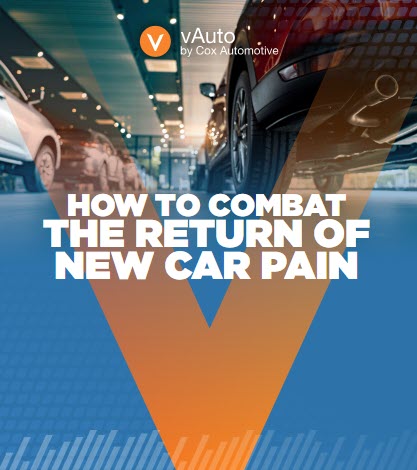A Call For Balance, Collaboration In New and Used Vehicles
I recently did an interview with CBT News where host Jim Fitzpatrick and I discussed three things dealers should do to better manage their new vehicle inventories.
We talked about keeping a sharper eye on new vehicle inventory age, bringing more market data/insights into vehicle ordering decisions and using the same data to politely and properly push back when factory reps are pressing you to take too many vehicles.
The interview focused on things the new vehicle department might do to improve its performance and position in today’s more demand-challenged market.
In hindsight, I should have added a couple other pointers about how the new vehicle department could be a better sibling for the used vehicle department.
I came to this realization the other day, after talking to yet another dealer who’s struggling to make a positive net profit in his used vehicle department despite retailing more vehicles.
A few minutes into the conversation, we started to examine the health of the dealer’s used vehicle investment.
In ProfitTime parlance, the dealer had an awful lot of Bronze vehicles, slightly more than 50 percent of the total inventory. ProfitTime designated the vehicles as Bronze because their individual Cost to Market, Market Days Supply and Retail Sales Volume metrics revealed them to be the dealer’s least productive inventory investments.
A sizable share of these Bronze vehicles had been around a long time, too. The average days in inventory ran north of 70 days—long after, I would submit, the vehicles had already run out of profit potential.
Next, we examined how the dealer had come to acquire these Bronze vehicles and, once again, I saw a sizable share of the vehicles came from the new vehicle department, in the form of off-lease purchases and trade-ins.
But here’s the problem: In many cases, the Cost to Market percentages for these vehicles when they arrived in the used vehicle inventory did not offer much profit-making potential for the used vehicle department.
For example, the off-lease vehicles often had Cost to Market percentages between 92 percent and 94 percent—figures that, in some cases, meant that the dealer paid more to acquire the vehicle than he could expect to get when it retailed (assuming the average vehicle transacts at a Price to Market percentage of 93 percent).
Similarly, we found some Cost to Market creep in the trade-in units. Whereas in the past, the dealership had brought in trades at Cost to Market percentages around/below 85 percent, managers were approving trade-in deals that brought the Cost to Market average to 88 percent and higher.
The dynamics we uncovered at this dealership are, unfortunately, not dissimilar to what I’m seeing at other stores.
To me, they suggest that while there are competing needs between new and used vehicle departments at dealerships, there’s room for more balance and collaboration—particularly if the used department ends up holding the bag, and you’re counting on it to help offset softer sales in new vehicles.
Here are two ways dealers can work to achieve a better balance between the departments:
- Take stock of your situation. I recommend that dealers analyze the Cost to Market trends for off-lease and trade-in purchases. Are your Cost to Market percentages for these vehicles growing, staying the same or, best of all, declining over the past six months to a year? If they’re on the rise, you probably should take a closer look at your process. Do your new vehicle managers make decisions in conjunction with your used vehicle managers or operate on their own? Are new vehicle managers trying to work with used vehicle managers, but they’re never around? Whatever the case, the data from your analysis helps make the case that there’s room for improvement and positive change.
- Make collaboration and communication a priority. The Chevy dealer saw improvement in the Cost to Market percentages for off-lease and trade-in vehicles after he required that his managers gather for weekly meetings to discuss their respective decisions. These aren’t “gotcha!” conversations. They are constructive exchanges that help everyone understand how a decision can, and usually does, affect someone else. Once the understanding is mutual, dealers tend to find that the communication, and give-and-take, you’d expect between a new and used vehicle department occurs regularly and for the right reasons.
As we look at the months ahead, it seems fair to say that the pressures on new and used vehicle departments to produce profit-positive outcomes for the dealership will only increase.
No one’s expecting that retail sales volumes and demand for new vehicles will return to levels we enjoyed in recent years. At the same time, while experts expect a robust used vehicle market for the foreseeable future, the market forces that are compressing dealer margins are expected to gain strength.
In my view, this is not an environment where a dealer would want his/her new vehicle and used vehicle department to knowingly, or even unwittingly, make things more difficult for each other.
Rather, it’s an opportunity to see how a rising tide of balance and collaboration between the departments can lift all boats.
The post A Call For Balance, Collaboration In New and Used Vehicles appeared first on Dale Pollak.








